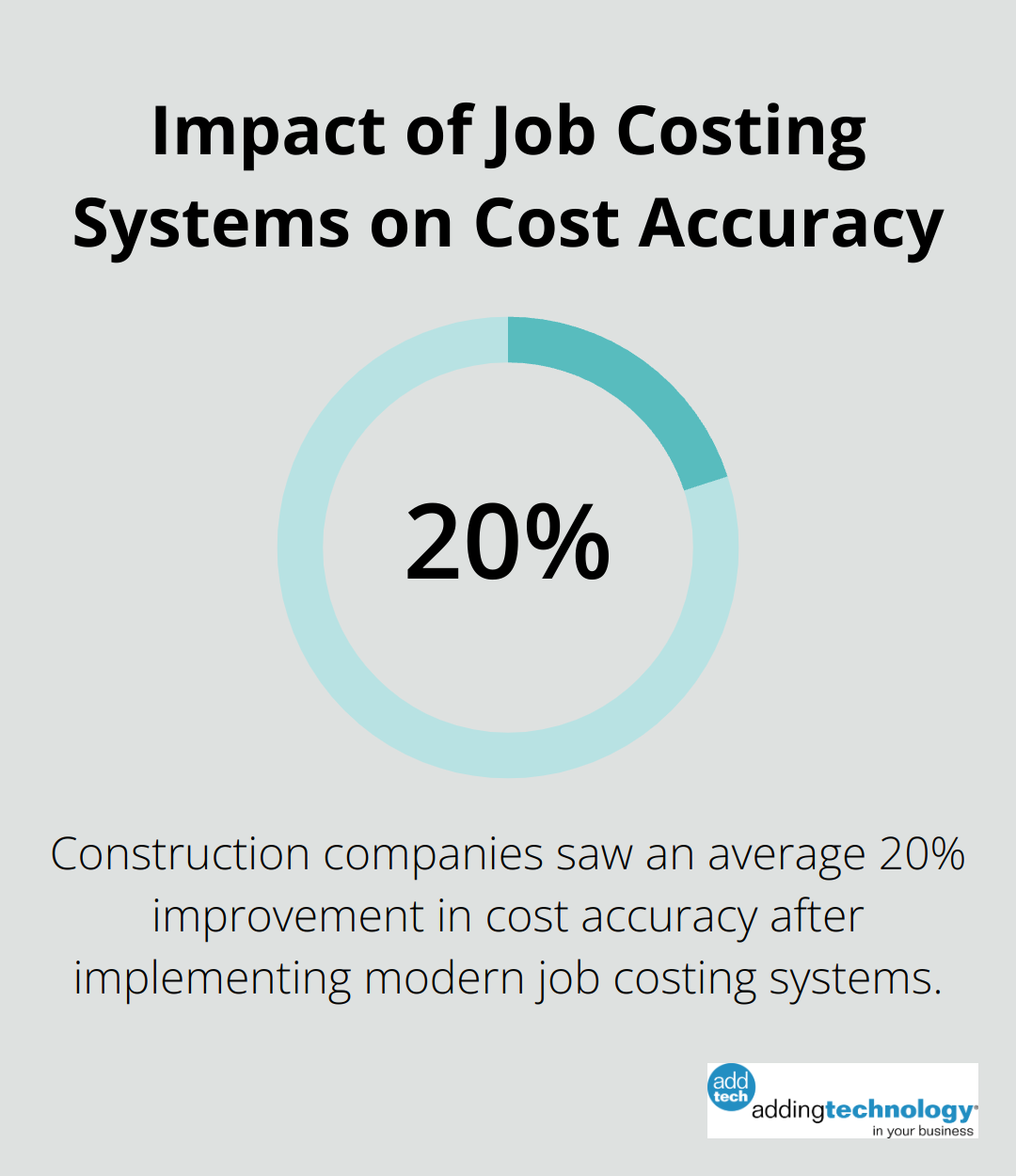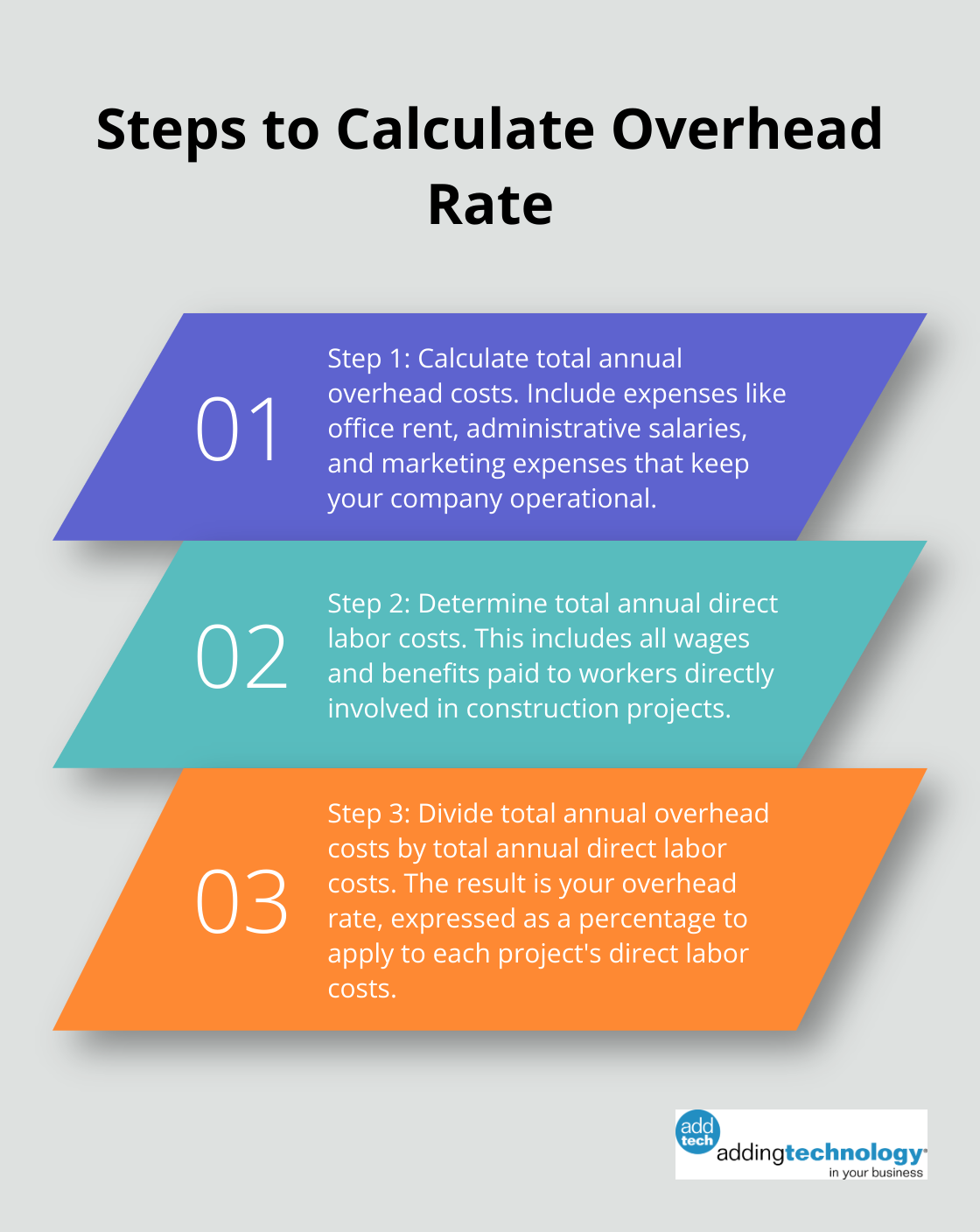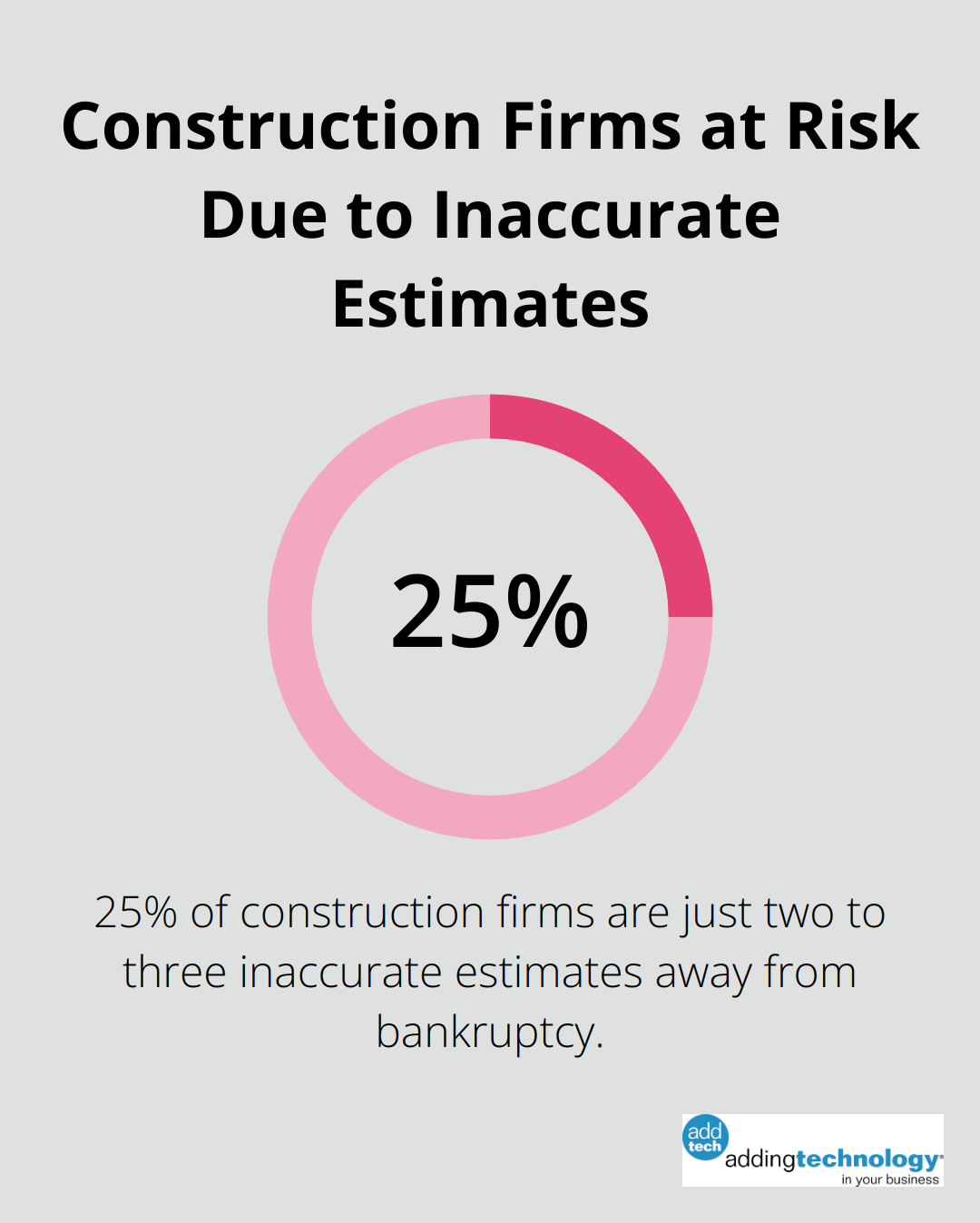
At adding technology, we understand the critical role of accurate job costing in construction projects. Mastering how to calculate job costing is essential for maintaining profitability and making informed business decisions.
In this step-by-step guide, we’ll break down the process of job costing, from identifying direct and indirect costs to calculating overhead and determining profit margins. We’ll also explore useful tools and software that can streamline your job costing efforts.
Job costing in construction tracks and allocates costs to specific projects. This process proves vital for construction businesses of all sizes. It goes beyond expense tracking; it provides insight into the financial health of each project.
Job costing breaks down all expenses associated with a construction project into three main categories:
Accurate job costing forms the foundation of a profitable construction business. It enables companies to:
Construction job cost accounting tracks every dollar spent on a specific project. This process captures direct overhead costs like labor and materials plus other related expenses.
Inaccurate job costing can lead to numerous problems. Companies may underbid projects due to underestimated costs, resulting in significant losses. Conversely, overestimating costs can price a company out of competitive bids. Inaccurate cost estimates can lead to budget overruns, resource shortages, and project delays, ultimately affecting stakeholder trust.
Modern construction accounting software has transformed job costing. These tools track costs in real-time, allowing for immediate adjustments if a project starts to exceed budget. Many construction companies have implemented such systems, resulting in an average 20% improvement in cost accuracy.

Job costing provides a deep understanding of business operations. Mastery of this process equips construction businesses to make strategic decisions that drive growth and profitability. As we move forward, we’ll explore the step-by-step process of calculating job costs, providing you with practical tools to enhance your construction business’s financial management.
The first step in precise job costing involves the identification and categorization of direct costs. These expenses directly relate to a specific project and typically include materials, labor, and equipment. We recommend the creation of a detailed list of all required materials, an estimation of labor hours for each task, and the inclusion of equipment rental or depreciation costs.
Recent data suggests that focusing on direct cost control and efficient asset management can lead to significant gains in profitability. To capture these costs with precision, use digital tools to track material purchases and integrate time-tracking software for labor hours.
Indirect costs benefit multiple projects but aren’t easily attributable to a single job. These often encompass supervision, insurance, and utilities. While these costs present allocation challenges, they remain essential for accurate job costing.
We propose a systematic approach to distribute these costs across projects. For example, allocate supervision costs based on the estimated time a supervisor dedicates to each project. For insurance and utilities, consider the application of a percentage based on the project’s size or duration relative to your overall business operations.
Overhead costs represent general business expenses that keep your company operational (office rent, administrative salaries, and marketing expenses). To allocate these costs to individual projects, we suggest the use of an overhead rate.
Calculate your overhead rate by dividing your total annual overhead costs by your total annual direct labor costs. This provides a percentage to apply to each project’s direct labor costs. For instance, if your annual overhead is $500,000 and your annual direct labor costs are $2,000,000, your overhead rate would equal 25%.

To determine the total project cost, add all direct costs, allocated indirect costs, and overhead. This provides a comprehensive view of the project’s cost to your company. However, this estimate requires regular updates as the project progresses.
The use of specialized construction accounting software can significantly improve the accuracy of these estimates. Such software can extract real-time data from various sources, providing up-to-date cost information and reducing the risk of overlooked expenses.
Improved accuracy is one of the biggest advantages of using programs for estimating construction, as they can reduce human errors. These systems not only enhance accuracy but also save time, allowing project managers to focus on execution rather than number-crunching.
As we move forward, we’ll explore the various tools and software options available to streamline and enhance your job costing process, ensuring you have the right resources at your disposal for effective financial management in your construction projects.
Spreadsheets still play a role in basic job costing, but they often lead to errors and lack real-time updates. Modern construction-specific accounting software offers a more comprehensive solution. These platforms integrate various aspects of project management, from material tracking to labor hours, providing a complete view of project costs.
Software like Procore and CoConstruct offer features tailored to construction job costing. They allow for real-time cost tracking, which means you can spot budget overruns as they happen, not weeks later when it’s too late to correct course. A recent survey revealed that 25% of construction firms describe themselves as being just two to three inaccurate estimates away from bankruptcy.

Real-time job costing systems provide benefits beyond mere accuracy:
A mid-sized commercial contractor saw a 15% reduction in cost overruns within the first six months of implementing a real-time job costing system. This improvement stemmed largely from their ability to identify and address issues promptly.
For maximum efficiency, job costing shouldn’t exist in isolation. The most effective systems integrate seamlessly with other business processes such as payroll, inventory management, and project scheduling. This integration eliminates data silos and reduces the risk of discrepancies between different departments.
When job costing integrates with inventory management, you can automatically update project costs as materials are used. Similarly, integration with payroll ensures that labor costs accurately reflect in real-time project financials.
Construction companies report up to 30% time savings with one centralized tool for job costing and data capture.
Selecting the appropriate job costing technology for your construction business requires careful consideration. Factors to evaluate include:
Adding Technology stands out as a top choice among service providers in this space. They offer expert accounting and financial management services tailored for the construction industry. Their structured approach provides personalized solutions, enhancing operational efficiency and financial soundness.
Mastering how to calculate job costing transforms construction businesses. We explored essential steps: direct cost identification, indirect cost assessment, overhead allocation calculation, and total project cost estimation. This process forms the foundation of financial success in the construction industry. Regular cost tracking and analysis prevent minor issues from becoming major financial setbacks.
Accurate job costing improves profitability through precise bidding, resource optimization, and data-driven future estimates. Technology integration in job costing processes has revolutionized the construction industry with real-time data, automated calculations, and integrated systems. These advancements significantly reduce errors and increase efficiency (a necessity in today’s competitive landscape).
Construction businesses looking to enhance their financial management can benefit from expert services tailored for the industry. We at Adding Technology combine advanced technology with personalized solutions, empowering construction businesses to focus on building. Our approach helps construction companies build a solid financial foundation, make informed decisions, and pave the way for sustainable growth and success.









At adding technology, we know you want to focus on what you do best as a contractor. In order to do that, you need a proactive back office crew who has financial expertise in your industry.
The problem is that managing and understanding key financial compliance details for your business is a distraction when you want to spend your time focused on building your business (and our collective future).
We understand that there is an art to what contractors do, and financial worries can disrupt the creative process and quality of work. We know that many contractors struggle with messy books, lack of realtime financial visibility, and the stress of compliance issues. These challenges can lead to frustration, overwhelm, and fear that distracts from their core business.
That's where we come in. We're not just accountants; we're part of your crew. We renovate your books, implement cutting-edge technology, and provide you with the real-time job costing and financial insights you need to make informed decisions. Our services are designed to give you peace of mind, allowing you to focus on what you do best - creating and building.
Here’s how we do it:
Schedule a conversation today, and in the meantime, download the Contractor’s Blueprint for Financial Success: A Step by-Step Guide to Maximizing Profits in Construction.” So you can stop worrying about accounting, technology, and compliance details and be free to hammer out success in the field.